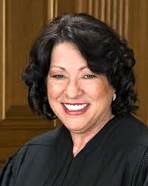Puerto Ricans in the United States

Teaching Puerto Rican History in 21st Century
Teaching Puerto Rican History in the 21st Century, Friday, November 20. 9:30 am Panel: What Have We Learned? 1:00 pm Lunch panel: Challenges & Strategies.
Panelists: Félix Matos-Rodríguez, President of Hostos, Community College; Virginia Sanchez-Korrol, Professor, Emerita Brooklyn College; Arcadio Díaz- Quiñones, Professor Emeritus, Princeton University and Moderator: Alberto Hernández, Centro Chief Librarian. 2:15 pm Afternoon Panel: Teaching with Technology.

|
 Stateside Puerto Ricans (or “Puerto Rican Diaspora,” “Nuyoricans” for those born in New York, “stateside or mainland Puerto Ricans,” or in Spanish: Estadounidenses puertorriqueños) areAmerican citizens of Puerto Rican origin, including those who migrated from Puerto Rico to theUnited States and those who were born outside of Puerto Rico in the United State. Puerto Ricans form the second largest Hispanic group in the United States. Most stateside Puerto Ricans descend from a combination of Europeans (especially Spanish), the indigenous Ta inopeoples, and Africans, with later smaller waves of immigrants from Latin America, a small number of Asians (mostly Chinese), and non-Hispanic people from the United States.
Stateside Puerto Ricans (or “Puerto Rican Diaspora,” “Nuyoricans” for those born in New York, “stateside or mainland Puerto Ricans,” or in Spanish: Estadounidenses puertorriqueños) areAmerican citizens of Puerto Rican origin, including those who migrated from Puerto Rico to theUnited States and those who were born outside of Puerto Rico in the United State. Puerto Ricans form the second largest Hispanic group in the United States. Most stateside Puerto Ricans descend from a combination of Europeans (especially Spanish), the indigenous Ta inopeoples, and Africans, with later smaller waves of immigrants from Latin America, a small number of Asians (mostly Chinese), and non-Hispanic people from the United States.
Puerto Rico is a Commonwealth or unincorporated territory of the United States. The residents of the island have been United States citizens since 1917, through the Jones-Shafroth Act of theUnited States Congress.
There are over four million Puerto Ricans living stateside, with reports that this number exceeded the population in Puerto Rico for the first time in 2003. Despite new demographic trends, New York City continues to be the home of the largest Puerto Rican community in the United States, with Philadelphia second, but Puerto Ricans live in all 50 states and the territories, with large numbers in New York, Massachusetts, Connecticut, Illinois, Ohio, New Jersey, Florida, Pennsylvania, and Texas. The strong presence of Puerto Ricans in Hawaii, Arizona, and California is partially due to previous generations moving to those states in the early 20th century to work as farm laborers.
Stateside Puerto Ricans have been receiving attention recently in the media as a potential swing vote, especially in Florida, promoting greater interest in this community. While Puerto Rican-Americans have a long history of fighting against prejudice and ignorance in the United States, there is a longstanding concern that the people of Puerto Rico are not as informed as they should be about the history and challenges faced by their compatriotas who have entered the United States since the mid-19th century.









